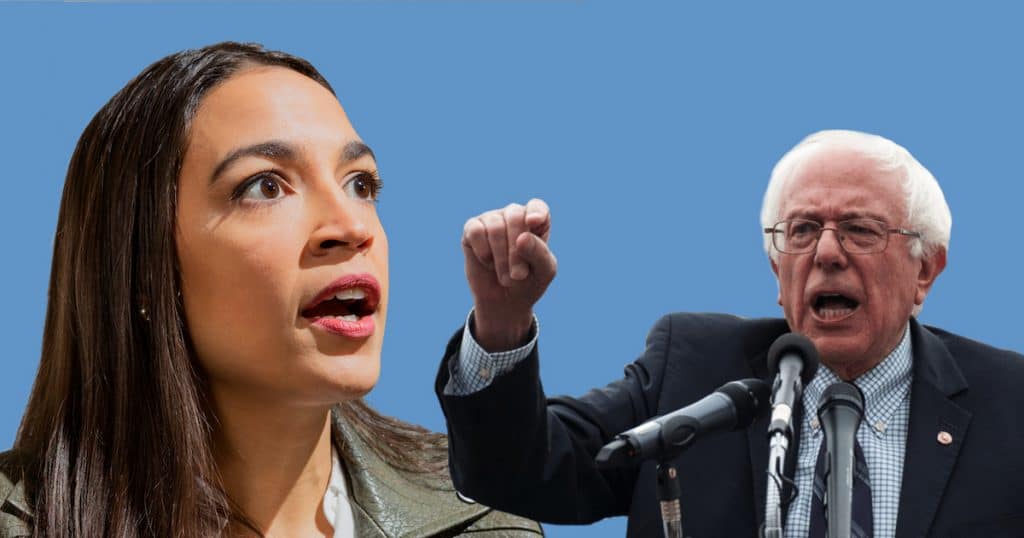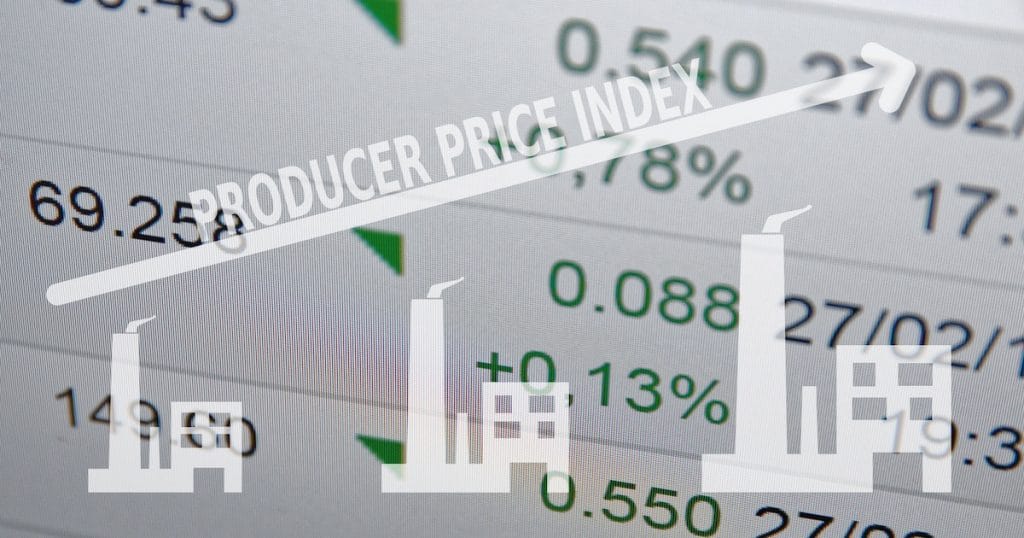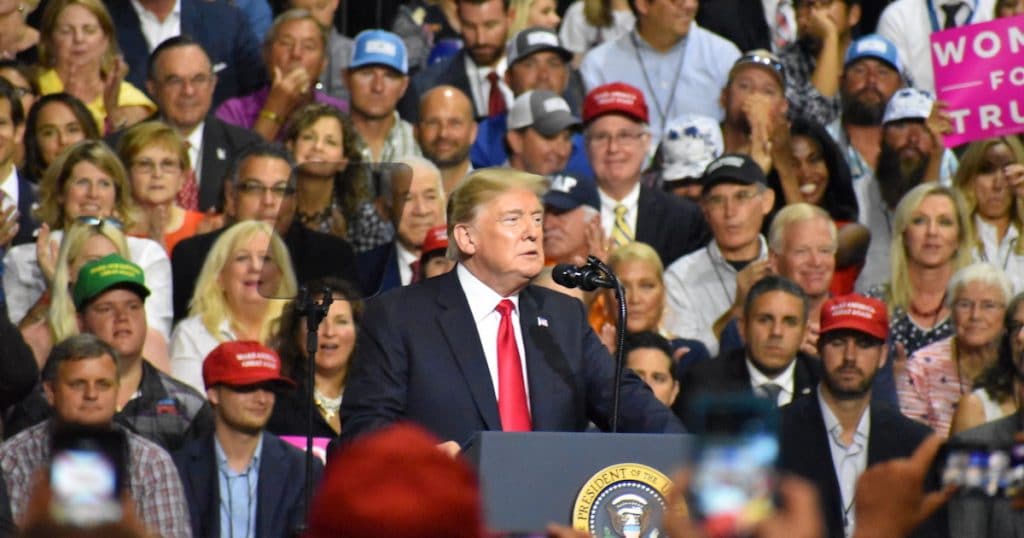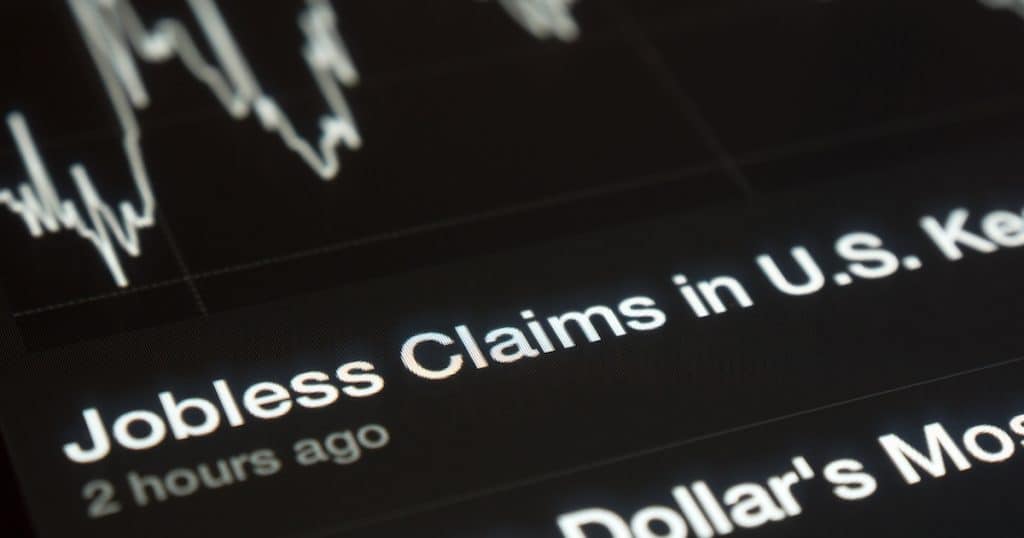About the ‘Cause’: Liberty Never Sleeps
On Liberty Never Sleeps, Tom laments everything is about the damn “cause” these days, and we’re forgetting what this nation was supposed to be all about.
On Liberty Never Sleeps, Tom laments everything
On Liberty Never Sleeps, Tom laments everything is about the damn “cause” these days, and we’re forgetting what this nation was supposed to be all about.
On Liberty Never Sleeps, Tom laments everything
The New York Federal Reserve Empire State Manufacturing Survey staged a mixed recovery in July, rebounding stronger than the forecast from -8.6 in June to 4.3. New orders climbed from -12.0 to -1.5.
| Indicator | Prior | Consensus Forecast | Forecast Range | Reading |
| General Business Conditions Index | -8.6 | 0.8 | -4.0 to 7.0 | 4.3 |
| Expectations Index | 25.7 | — | — | 30.8 |
Thirty percent (30%) of respondents reported business conditions for manufacturing firms improved in July, while 26% reported that conditions worsened.
The employment index fell further by 6 points to -9.6, pointing to a decline in employment levels. The average workweek index came in at 3.8, indicating somewhat longer workweeks.
But the index for future business conditions rose another five points to 30.8, indicating a stronger reading next month. The index for future new orders also moved higher, suggesting an expected climb out of contraction next month.
In another positive, the capital expenditures index — which declined significantly last month — rose 9 points to 19.0, and the technology spending index ticked up to 14.6.
The New York Federal Reserve Empire State

I’ve repeatedly warned about the downsides of socialism, calling it “evil and stupid,” as well as a “dreary failure.”
Though these debates can be frustrating because of vague definitions.
Some people, when they talk about socialism, are referring to government ownership, central planning, and price controls.
Others, by contrast, are referring to Scandinavia’s market-based welfare states.
And there’s also a distinction to be made between Marxist socialism and less totalitarian versions.
Speaking of which, Joseph Stiglitz opined in The Washington Post about the benefits of so-called democratic socialism.
…no one in the United States is advocating a government takeover of coal mines or oil fields — not Ocasio-Cortez, not Sanders, not anybody. …the extremes of capitalism and its dysfunction have given rise to questions such as: Can capitalism be saved from itself? …American democratic socialists — or call them what you will — is simply advocating a model that embraces government’s important role in social protection and inclusion, environmental protection, and public investment in infrastructure, technology and education. They recognize the public’s regulatory role in preventing corporations from exploiting customers or workers… Millennials respond to the label “democratic socialist” in a pragmatic way. They say, if it means ensuring a decent life for all Americans, then we’re for it. …many of these ideas have the support of a majority of Americans, especially the young.
I don’t doubt that many people respond favorably to polling questions about getting things for free.
Even the young. Maybe especially the young.
Indeed, the desire to get something for nothing is the Achilles Heel of democracy.
But does any of that mean socialism works?
Professor Ilya Somin of George Mason Law School is appropriately skeptical.
He explains why socialism imposed by a democratically elected government won’t be any more successful than the totalitarian forms of socialism.
Historically, socialism—defined as government control over all or most of the economy—has led to mass murder, poverty, and oppression on an enormous scale. …The current horrible oppression in Venezuela…is just the latest iteration of the same pattern. …current advocates of democratic socialism argue that this awful record isn’t relevant to their proposals. …we are assured that latter-day socialists don’t actually mean to impose government control over the means of production. They just want greatly increased regulation and welfare state spending. Unfortunately, the…expansion of government power advocated by modern socialists is so great that it would put most of the economy under state control, even if much industry formally remained under private ownership. It goes far beyond any Scandinavian precedent. …The standard agenda favored by most democratic socialists – single-payer health care, universal free college, and a guaranteed federal job for anyone who wants one—would cost some $42.5 trillion over a ten year period ($4.25 trillion per year). …many enterprises would officially remain under private ownership, implementation of the democratic socialist agenda would ensure that the federal government controls the lion’s share of actual economic resources.
Professor Somin warns that the Sanders/AOC agenda would push America way to the left of the Nordic nations.
Often, their agenda is analogized to the policies of Scandinavian nations, which have large welfare states, but remain relatively prosperous and free. …The democratic socialist agenda goes well beyond the Nordic nations advocates sometimes cite as models. While these countries have comparatively large welfare states, they combine them with low levels of regulation and high openness to international trade. To take just one example, none of the Nordic nations have a national government-mandated minimum wage. The Nordic nations actually come close to the United States (and occasionally even outscore it) on standard measures of economic liberty. Iceland (slightly ahead of the US) and Denmark (slightly behind) were statistically indistinguishable from the US in the latest Index of Economic Freedom ranking put out by the conservative Heritage Foundation. Finland and Sweden were only slightly lower. When Danish Prime Minister Lars Løkke Rasmussen tried to explain to Bernie Sanders that his country is not actually socialist, the latter should have listened.
I’ve made similar arguments about relatively high levels of economic liberty in Scandinavia, so I obviously think this is spot on.
Somin also speculates that democratic socialism in America may morph into totalitarian socialism. Which is what’s happened in Venezuela. And may happen to Greece.
I worry that he’s right, particularly since redistribution erodes societal capital.
Though I hope he’s wrong.
In any event, that’s a secondary issue. At least for now.
What matters today is that politicians are promising lots of freebies. Notwithstanding the “investment” argument made by Stiglitz and others, those new handouts will undermine prosperity.
And that’s true regardless of whether the additional spending is financed with new taxes or new debt (or printing money).
The democratic socialism agenda supported by Bernie

The Bureau of Labor Statistics (BLS) Producer Price Index (PPI) met a mild consensus forecast for June, with final demand advancing a seasonally adjusted 0.1%.
| Indicator | Prior | Consensus Forecast | Forecast Range | Result |
| PPI-FD – M/M ∆ | 0.1% | 0.1% | -0.1% to 0.3% | 0.1% |
| PPI-FD – Y/Y ∆ | 1.8% | 1.7% | 1.3% to 2.0% | 1.7% |
| PPI-FD less food & energy – M/M ∆ | 0.2% | 0.2% | 0.0% to 0.3% | 0.3% |
| PPI-FD less food & energy – Y/Y ∆ | 2.3% | 2.2% | 2.1% to 2.4% | 2.3% |
| PPI-FD less food, energy & trade services – M/M ∆ | 0.4% | 0.2% | 0.2% to 0.3% | 0.0% |
| PPI-FD less food, energy & trade services – Y/Y ∆ | 2.3% | 2.3% | 2.2% to 2.4% | 2.1% |
The Producer Price Index (PPI) met a

With President Trump rising in the Real Clear Politics aggregate of polls, the temptation is to extrapolate his re-election chances. Even mainstream media pollsters have grudgingly admitted as much in their latest polling, such as the ABC/Washington Post Poll headline, Trump reaches new heights.
Of course, this would lead one down the same very large, as it encompassed the entire punditry, rabbit hole that swallowed all the aggregators and mainstream media in 2016. It must be clear to everybody by now that four-way polling has little direct correlation with an Electoral College result and even less so when done on a two-party basis.
It is perfectly clear third- and fourth-party polling is always inflated over the actual result. Some of their support scurries back to one of the two major parties to prevent either from winning. But residual third and fourth party support is enough to make popular vote predictions dubious at best, particularly those of the disastrous betting markets.
It leads to silly statements such as, “If only Johnson hadn’t run as the Libertarian candidate Hillary would have won.”
This is not to entirely discount popular vote polling in 2016. Final likely voter polls, stripped of partisan bias and meaningless “adult” and “registered voter” responses, were more or less accurate. The aggregate of final polls were off roughly 2.5 points of Hillary Clinton’s actual support.
Some, like the Monmouth Poll (Hillary +6), were disastrous. Others, such as Fox (Hillary 48%/Trump 44%), were excellent and off by just 1.9 points.
The failing was in some state polling, especially Wisconsin and Michigan. Pennsylvania was well within an acceptable margin of error. The biggest failing was pundit bias, presuppositions, and misreading of the polling.
Even the touted Nate Silver — who was lauded in some quarters for not giving Hillary an over 90% probability of winning in his final analysis — pegged her probability of victory at 85% if she won the popular vote by 2 points or more, which she did.
On the other hand, the top five professional political scientists’ academic forecast models predicted the popular vote outcome. In one case, Brad Lockerbie was nearly exact to within 0.1 point and astonishingly months in advance of the actual election.
This begs the question as to the value of not only polling but conventions, massive advertising, get out the vote slogging, debates and all the other paraphernalia and rituals of presidential elections.
Before we discard all pollsters and rely entirely on the seemingly infallible political scientists — such as the famous academic Alan Lichtman, who has predicted every presidential election winner for thirty years straight — there may well be an overlooked “hidden” poll that will be the best indicator of Trump’s chances.
Apart from the headline job approval aggregation, RCP also tracks an aggregate of Trump’s “Favorable/Unfavorable” rating.
On July 15, 2015, his favorability rating stood at 22.7%. One has to admire Trump’s self-belief to seek the presidency with that rating. By Election Day on November 6, 2016, it had climbed to 37.5%. In unison, pundits noted it was the worst of any presidential candidate, ever.
Clinton was also underwater at 41.8%. Despite his favorability rating, and despite the pundits, Trump still received 45.9% of the popular vote. His vote share was 8.4 points higher than his favorability rating.
Trump’s current aggregate favorability rating at RCP is 43%. His approval is around the 45% mark. If the same formula applies, then his current approval would look more like 51.4%. Consequently, that is right in line with the only “likely voter” approval poll conducted by Rasmussen Reports, which gauges him at 48%-50%.
It may turn out that the chastened pollsters and pundits, if that were possible in respect of the latter, may get their act together and the 2020 outcome correctly. It may also turn out the professionals and Professor Lichtman carry the torch for the academics so impressively once again.
But until the favorability prediction formula is proven inaccurate, there is absolutely no reason whatsoever to not include it prominently in the mix for 2020. If 37.5% favorability ended up with 306 votes in the Electoral College, then at this point at 43%, it indicates Trump by a landslide with Minnesota, Maine and New Hampshire in play and 322 electoral votes.
There may be an overlooked hidden poll

Initial jobless claims fell sharply to a seasonally adjusted 209,000 for the week ending July 6, easily beating the consensus forecast. The 4-week moving average fell solidly by 3,250 to 219,250.
| Indicator | Prior | Prior Revised | Consensus Forecast | Forecast Range | Result |
| Initial jobless Claims | 221 K | 222 K | 220 K | 209 K to 224 K | 209 K |
The advance seasonally adjusted insured unemployment rate remained unchanged at a very low 1.2% for the week ending June 29.
The advance number for seasonally adjusted insured unemployment rose 27,000 during the week ending June 29 to 1,723,000. The 4-week moving average rose 5,750 to 1,694,750, impacted by a temporary increase two weeks prior.
The Labor Department (DOL) said no state was triggered “on” the Extended Benefits program during the week ending June 22.
The highest insured unemployment rates in the week ending June 22 were in Puerto Rico (2.2), Connecticut (2.1), New Jersey (2.0), Pennsylvania (1.9), Alaska (1.8), California (1.8), Rhode Island (1.7), Massachusetts (1.6), and Illinois (1.5).
The largest increases in initial claims for the week ending June 29 were in New Jersey (+4,914), New York (+2,593), Michigan (+1,671), Alabama (+898), and Missouri (+820), while the largest decreases were in Pennsylvania (-4,119), Massachusetts (-2,311), California (-1,992), Connecticut (-1,692), and Maryland (-1,203).
Initial jobless claims fell sharply to a
On Liberty Never Sleeps, Tom discusses the slide toward anarchy in the United States and the death of Ross Perot.
On Liberty Never Sleeps, Tom discusses the

The U.S. Census Bureau reported the second estimate for wholesale inventories in May held steady at a solid 0.4%, meeting the consensus forecast. The advance estimate also posted a reading that could prove another big boost to gross domestic product (GDP).
| Indicator | Prior | Consensus Forecast | Forecast Range | Result |
| Inventories – M/M ∆ | 0.8 % | 0.4 % | 0.1 % to 0.4 % | 0.4 % |
All results are after adjustment for seasonal variations but not for price changes.
Total inventories of merchant wholesalers, except manufacturers’ sales branches and offices came in at $678.1 billion, up 0.4% (±0.2%) from the revised April level.
Business inventories are now up 7.7% (±1.1%) from the revised May 2018 level.
Sales of merchant wholesalers, except manufacturers’ sales branches and offices came in at $503.4 billion, up 0.1% (±0.4%) from the revised April level. They’re now up 0.4% (±0.9%) year-over-year.
The March 2019 to April 2019 percent change was unrevised from the preliminary estimate of down 0.4% (±0.5%).
The May inventories/sales ratio for merchant wholesalers, except manufacturers’ sales branches and offices, based on seasonally adjusted data, was 1.35. The May 2018 ratio was 1.26.
The U.S. Census Bureau reported the second
| Indicator | Prior | Consensus Forecast | Forecast Range | Result |
| Job Openings | 7.449 M | 7.400 M | 7.400 M to 7.479 M | 7.323 M |
The Bureau of Labor Statistics (BLS) JOLTS report just missed expectations, with the number of job openings little changed at 7.323 million on the last business day of May. The job openings rate was 4.6%.
The number of hires decreased by 266,000 to 5.7 million, and separations were largely unchanged at 5.6 million. The hires rate was 3.8%.
The JOLTS report just missed expectations, as
On Liberty Never Sleeps, Tom discusses the facts and details surrounding the Jeffrey Epstein case, as well as a few other things in the news this week.
On Liberty Never Sleeps, Tom discusses the